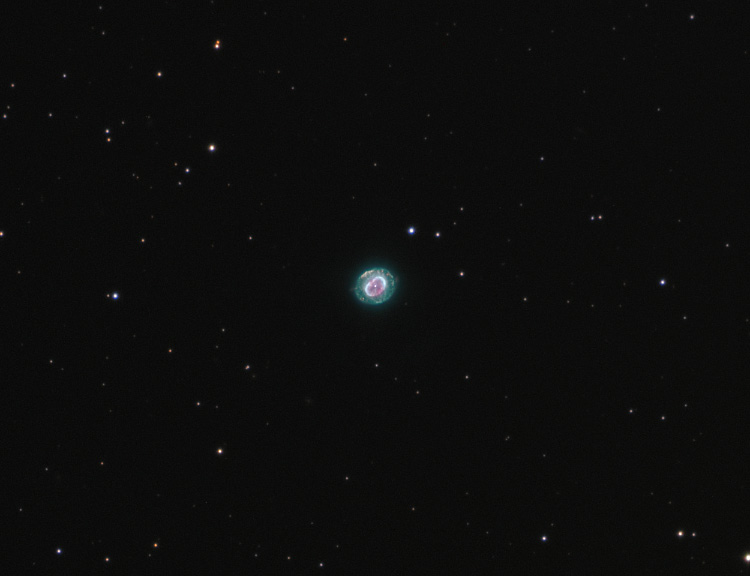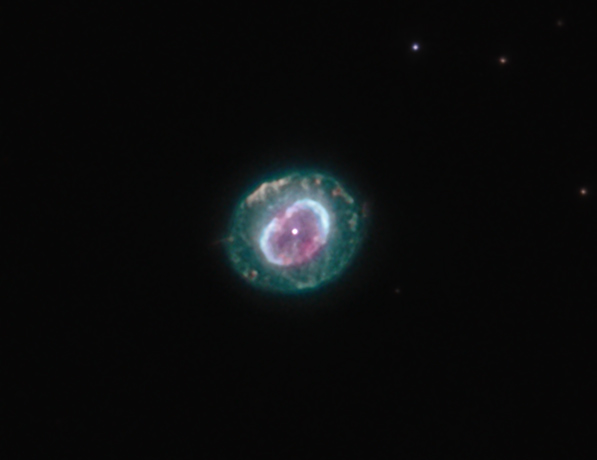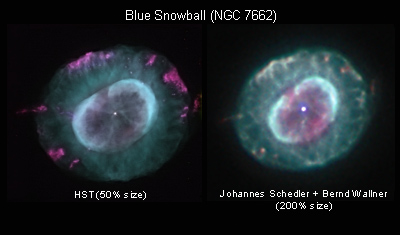
About this Image |
|
|
The name of this bright but small Planetary nebula is caused by it's bright blue-gree color.
The color is generated by strong O-III emission, accompanied by much fainter H-alpha and H-beta emission.
|


|
|
| Optics |
16" cassegrain in secondary focus at f/10 |
| Mount | MK-100 GEM |
| Camera | SBIG STL-11000M with AO-L at -25C, internal filter wheel |
| Filters | Astronomik LRGB |
| Date | Nov 23, 2006. |
| Location | Wildon/Austria |
| Sky Conditions | mag 5 sky, L: raw FWHM 1.4", temperature 10 C |
| Exposure | L:R:G:B = 30:10:10:10 minutes (5-minute sub-exposures), all 1x1; |
| Processing | Image aquisition in Maxim 4.56; calibration, preprocessing and deconvolution in CCDStack; wavelet filtering; final processing in Photoshop CS2 |